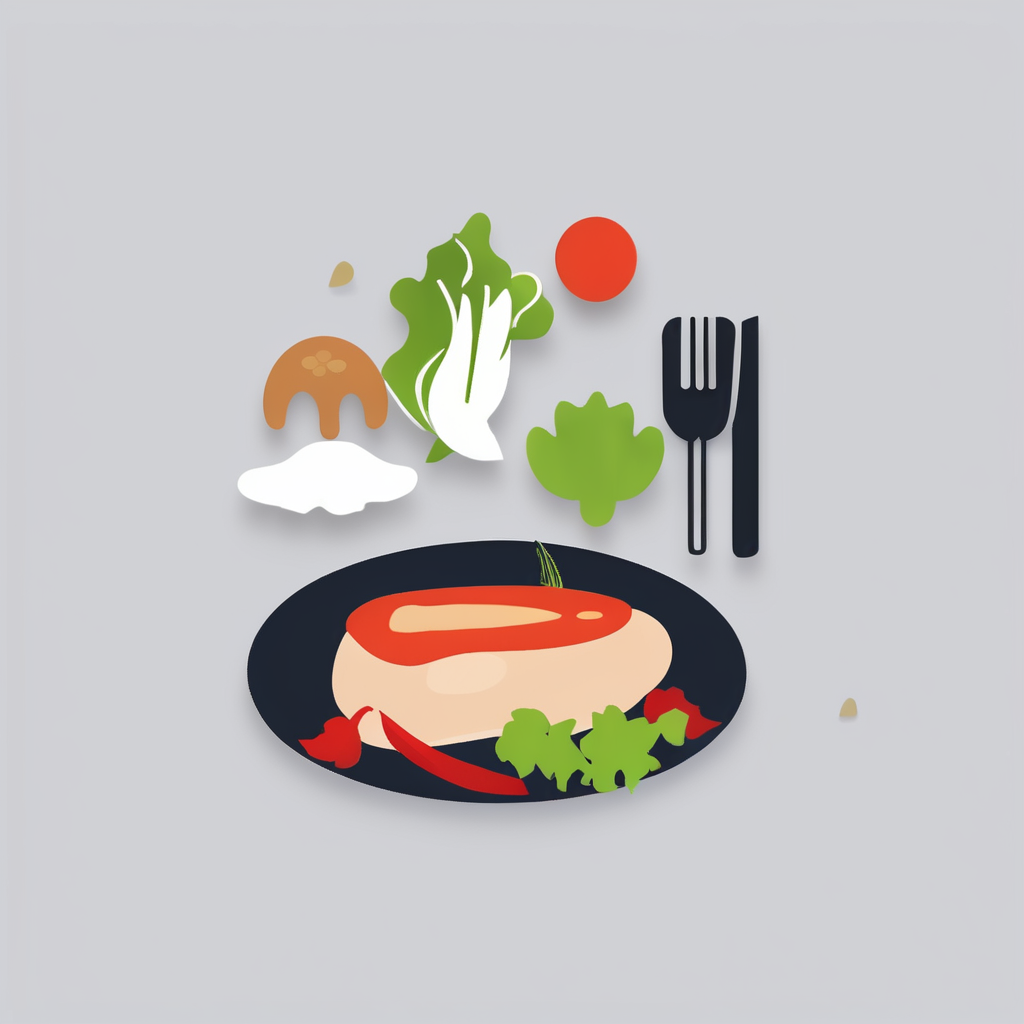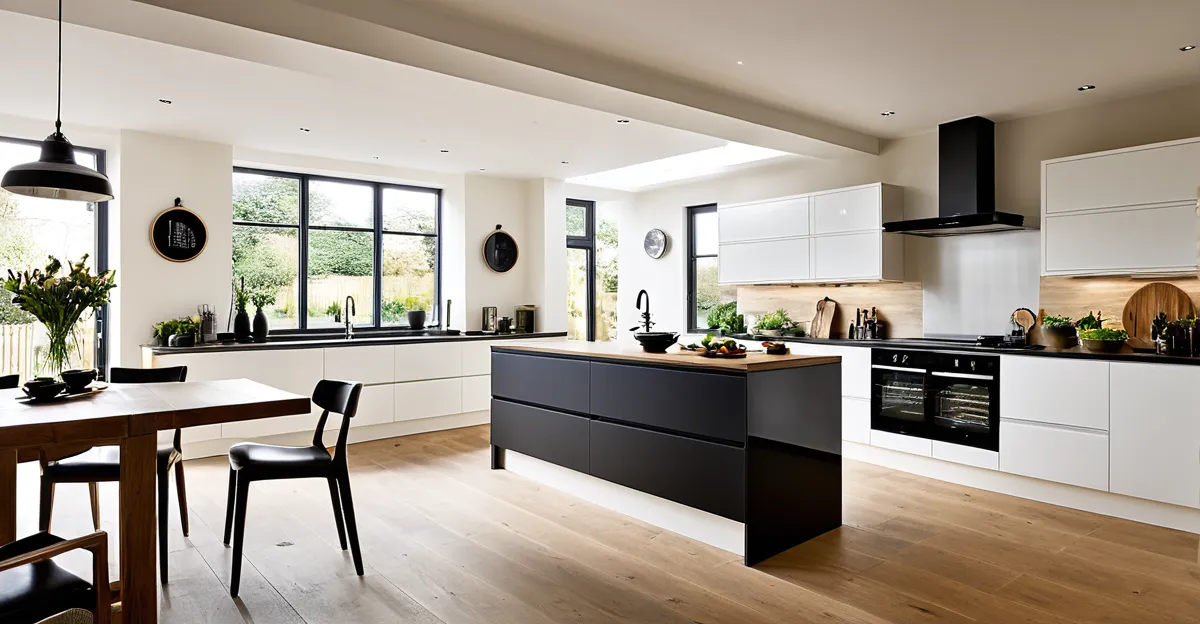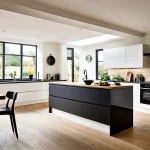Core influences shaping UK kitchen design trends
The evolution of kitchen design trends UK closely mirrors significant lifestyle changes affecting how homes function. Modern lifestyle shifts have notably impacted kitchen layouts and their functionality. As families seek versatile spaces, kitchens now prioritize convenience and adaptability, blending cooking with socializing. This shift reflects a broader preference for kitchens that serve multiple roles beyond food preparation.
One major influencing factor is the rise of open-plan living, which encourages seamless integration of the kitchen with dining and living areas. This design fosters connection and engagement, making kitchens central hubs of the home. Multifunctional spaces have become vital, offering homeowners the flexibility to entertain guests, work remotely, or supervise children within sightlines.
Also read : Discover the uk’s strategies for meeting the rising demand for energy-efficient kitchen appliances
Urban living conditions also influence kitchen design trends UK profoundly. With smaller living spaces, especially in cities, kitchens must be compact without compromising efficiency. Innovative storage solutions and smart appliances help maximize usability in limited footprints. These adaptations respond directly to the demand for practical, stylish kitchens in confined urban environments, demonstrating how lifestyle changes continue shaping UK kitchen design.
Technology redefining the modern UK kitchen
Smart kitchen technology is rapidly transforming how UK households approach cooking and food preparation. The integration of connected devices like smart ovens, refrigerators, and voice-activated assistants offers unprecedented convenience, allowing users to control settings remotely and automate routine tasks. This trend exemplifies notable innovation in kitchen design, where functionality meets sleek aesthetics.
Additional reading : Discover the cutting-edge kitchen design trends sweeping across the uk
Touchless taps have surged in popularity, responding to hygiene concerns while promoting water efficiency. Similarly, smart storage solutions use sensors and organization systems that keep your kitchen clutter-free and minimize food waste, aligning with sustainable living goals.
Appliance trends now favor high-tech cooking features such as induction hobs that communicate with compatible cookware or ovens that adjust cooking modes based on dish type. These advances not only enhance precision but also reduce energy consumption, supporting both environmental and economic benefits.
Embracing these technologies means UK kitchens are becoming smarter, safer, and more sustainable. For homeowners, this innovation brings practical advantages—from faster meal prep to longer-lasting ingredients—making everyday cooking more seamless and enjoyable.
Emphasis on Sustainability and Eco-Friendly Materials
Sustainable kitchen trends are reshaping how we design and equip our homes. A key focus is the increasing demand for eco-friendly materials such as recycled wood, bamboo, and reclaimed metal, which reduce environmental impact while adding unique character. Homeowners and designers prioritize responsible sourcing to ensure that the raw materials come from managed forests or recycled streams, minimizing deforestation and waste.
Energy-efficient appliances now dominate green design, offering significant reductions in electricity consumption without compromising performance. Induction cooktops, LED lighting, and Energy Star–rated refrigerators exemplify how innovation supports sustainability goals. Alongside this, sustainable cabinetry made from low-VOC finishes and renewable timber improves indoor air quality and promotes health.
Government guidelines also drive these shifts by incentivizing eco-conscious choices and setting minimum efficiency standards. At the same time, growing consumer awareness encourages people to invest in kitchens that align with environmental values. The synergy between these factors fosters long-term benefits, combining style, functionality, and a reduced carbon footprint. Embracing sustainable kitchen trends means not only making responsible choices but also enjoying a healthier, more aesthetically pleasing home environment.
Evolving color palettes and material choices
Exploring kitchen color trends UK reveals a clear shift towards earthy tones, combined with bold accent colours that energise contemporary spaces. These palettes embrace the calming influence of nature, perfectly aligning with the growing appeal of biophilic design. Think deep greens, warm terracottas, clay oranges, and muted blues that create a harmonious and inviting atmosphere.
Material inspiration is equally drawn from natural sources, with wood, stone, and quartz alternatives dominating kitchen surfaces. Wood’s warmth adds texture and authenticity, while stone options such as granite and marble-inspired quartz bring durability and elegance. Quartz alternatives offer versatile looks with added practicality, appealing to busy lifestyles that need robust finishes without compromising style.
Mixing textures and contemporary finishes intensifies visual interest. Glossy cabinetry paired with matte drawer fronts or textured wooden accents creates depth. Metallic handles and fixtures introduce subtle shine, complementing natural materials. This combination delivers a sophisticated yet approachable aesthetic that reflects both tradition and modernity in UK kitchens.
These kitchen color trends UK and material choices form a dynamic foundation, encouraging innovative design while maintaining timeless appeal.
Social, cultural, and generational drivers
Understanding UK homeowner preferences requires examining how social, cultural, and generational factors shape kitchen design choices. Social media and design shows now play a pivotal role. Platforms showcase diverse styles, inspiring homeowners to seek fresh, aspirational looks. This visibility drives demand for personalization—buyers want kitchens reflecting their unique tastes rather than generic trends.
Generational tastes vary considerably. Older homeowners often prefer classic, timeless designs, valuing durability and subtle elegance. Younger generations, especially millennials and Gen Z, lean toward contemporary, bold styles with vibrant colours and innovative layouts. They are more receptive to mixing styles and experimenting with textures, influenced heavily by online trends and influencer endorsements.
Regional differences also emerge in preferences. Urban homeowners may opt for compact, multifunctional kitchens tailored to smaller living spaces that still enable social interaction. In contrast, rural areas often favour spacious, traditional kitchens, emphasising warmth and practicality.
This rise in individual expression means customization is no longer a luxury but expected. UK homeowners consistently look for options to personalise cabinetry, lighting, and surfaces to create spaces that resonate with their lifestyles and identities. This cultural and generational diversity deeply influences how kitchen design evolves today.
Expert insights and visual inspirations
Delving into expert kitchen opinions reveals valuable perspectives on the latest trends shaping modern homes. UK kitchen designers emphasize the importance of blending functionality with style, recommending clean lines and integrated storage to keep spaces uncluttered. According to these professionals, neutral palettes remain popular, but bold accents in cabinetry or backsplashes add character.
Kitchen design examples showcase this balance elegantly. For instance, an open-plan kitchen featuring matte black handles and light oak surfaces demonstrates how contrasting textures can create depth without overwhelming the room. Designers also highlight the growing appeal of multifunctional islands that double as workstations and casual dining areas, reinforcing the trend toward versatile living spaces.
Visual inspiration boards further illustrate emerging styles, such as the fusion of minimalist structures with natural materials—stone countertops paired with warm wood finishes. Experts advise homeowners to consider lighting carefully; layered illumination can enhance both practicality and ambiance.
By studying these real-world applications alongside trend analysis, prospective buyers gain a clearer understanding of which design elements will endure and which might date quickly. This knowledge empowers smarter, more satisfying kitchen investments.


